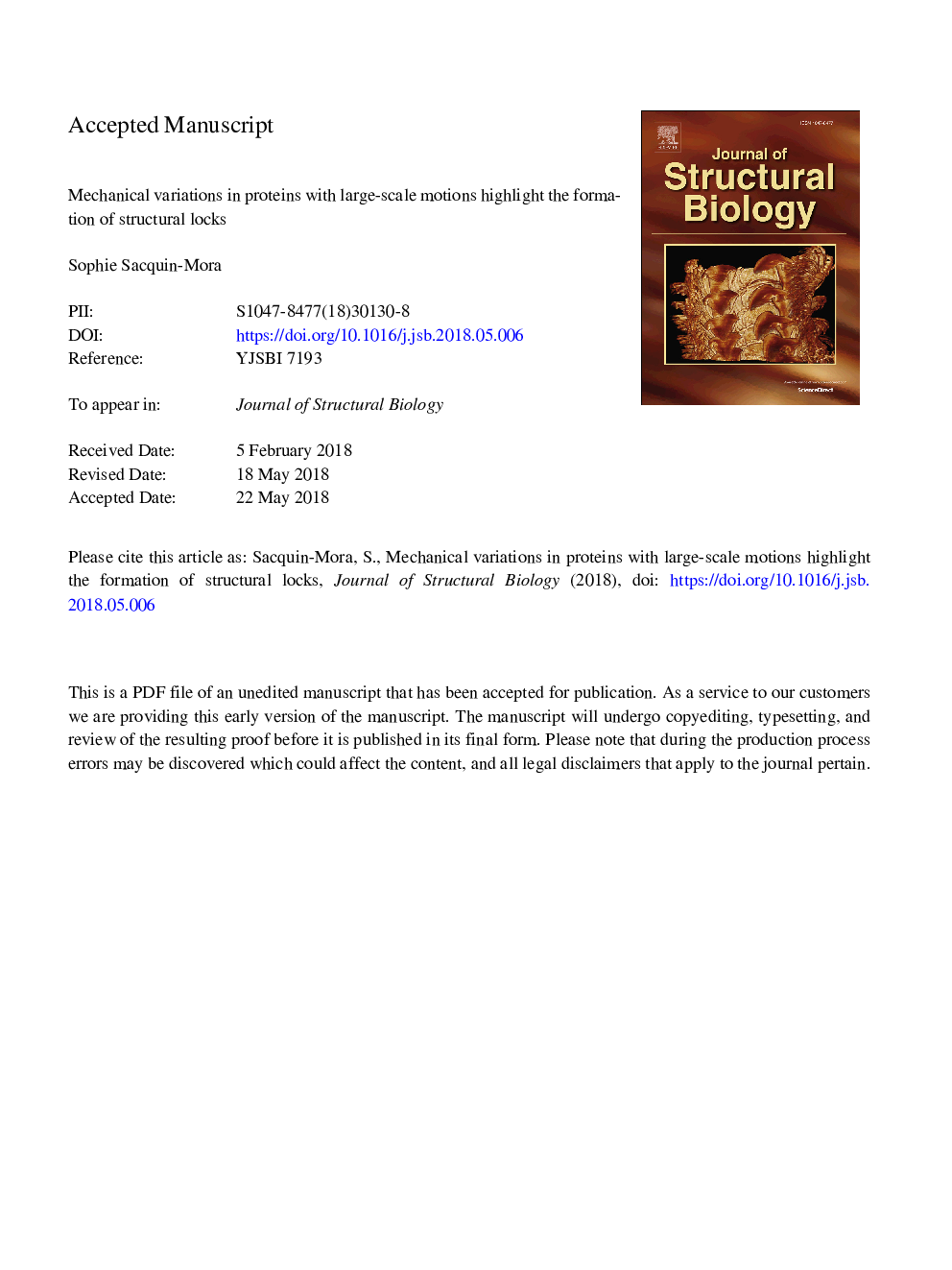| Article ID | Journal | Published Year | Pages | File Type |
|---|---|---|---|---|
| 8648155 | Journal of Structural Biology | 2018 | 36 Pages |
Abstract
Protein function depends just as much on flexibility as on structure, and in numerous cases, a protein's biological activity involves transitions that will impact both its conformation and its mechanical properties. Here, we use a coarse-grain approach to investigate the impact of structural changes on protein flexibility. More particularly, we focus our study on proteins presenting large-scale motions. We show how calculating directional force constants within residue pairs, and investigating their variation upon protein closure, can lead to the detection of a limited set of residues that form a structural lock in the protein's closed conformation. This lock, which is composed of residues whose side-chains are tightly interacting, highlights a new class of residues that are important for protein function by stabilizing the closed structure, and that cannot be detected using earlier tools like local rigidity profiles or distance variations maps, or alternative bioinformatics approaches, such as coevolution scores.
Keywords
Related Topics
Life Sciences
Biochemistry, Genetics and Molecular Biology
Molecular Biology
Authors
Sophie Sacquin-Mora,
